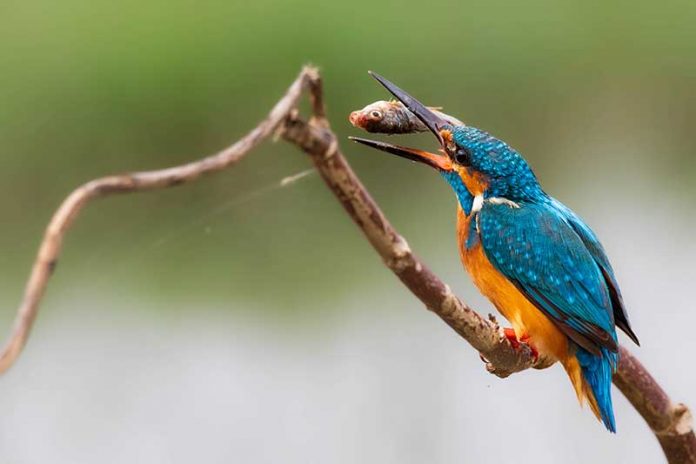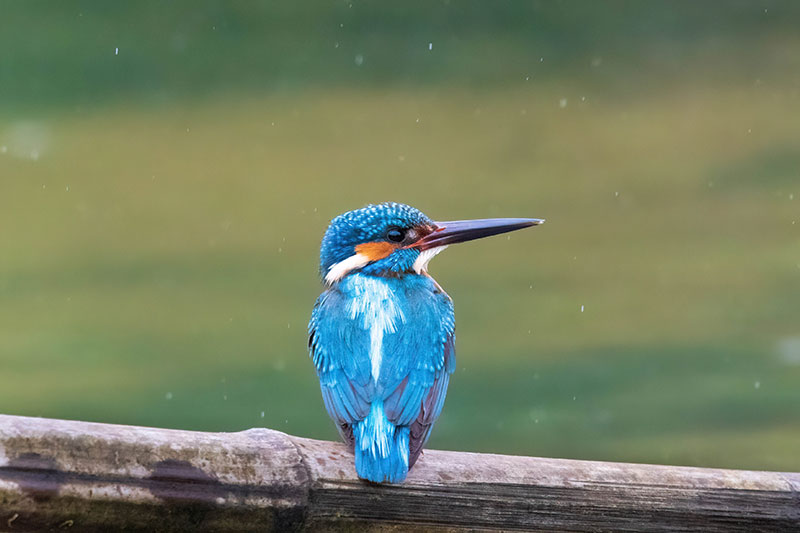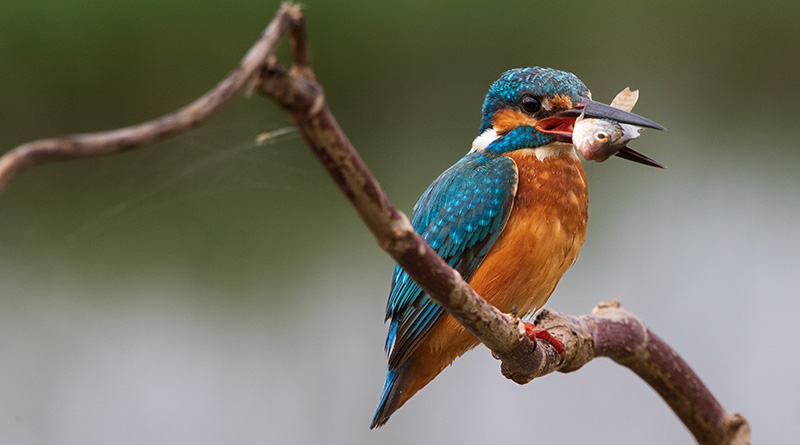The common kingfisher (Alcedo atthis), also known as the Eurasian kingfisher or river kingfisher, is a small kingfisher with seven subspecies recognised within its wide distribution across Eurasia and North Africa.
This sparrow-sized bird has the typical short-tailed, large-headed kingfisher profile; it has blue upperparts, orange underparts and a long bill.
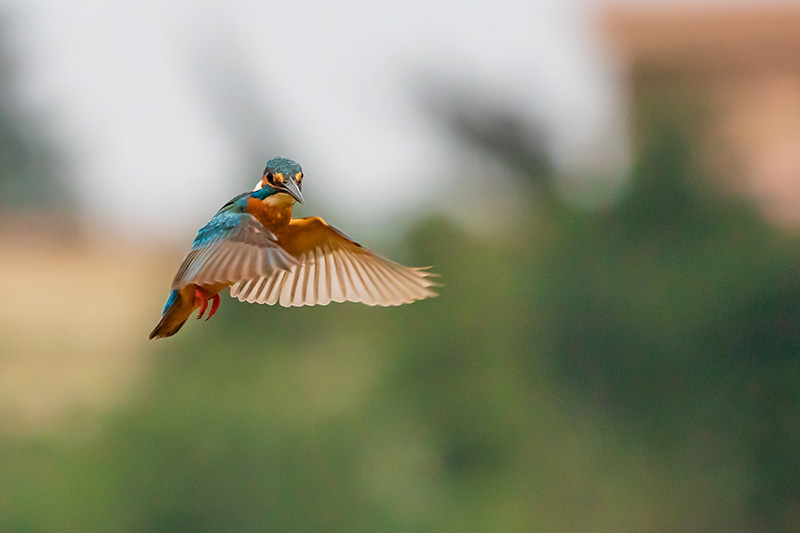
It feeds mainly on fish, caught by diving, and has special visual adaptations to enable it to see prey under water. They close their eyes as they dive into the water, so they are fishing blind! They bob their heads before diving to accurately judge the depth of the fish.
The common kingfisher is widely distributed over Europe, Asia, and North Africa. It is a common breeding species over much of its vast Eurasian range.
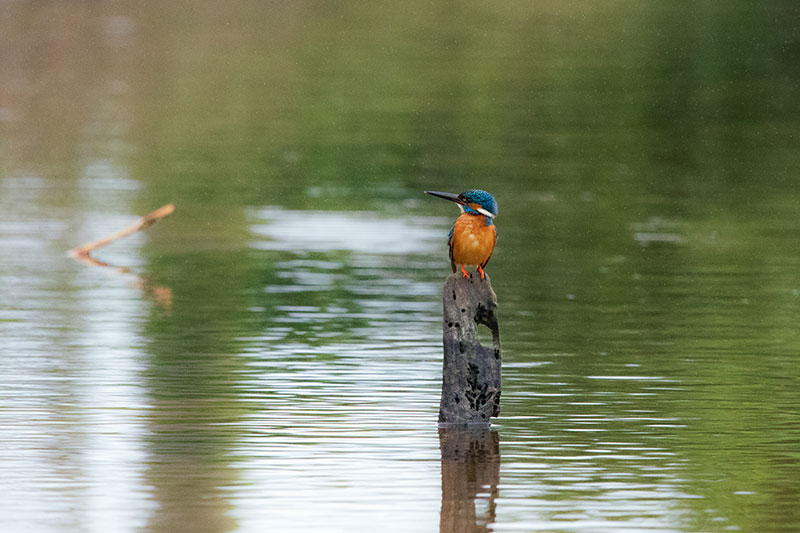
The Common kingfisher hunts from a perch 1–2 m (3–7 ft) above the water, on a branch, post or riverbank, bill pointing down as it searches for prey.
Like all kingfishers, the common kingfisher is highly territorial; since it must eat around 60% of its body weight each day, it is essential to have control of a suitable stretch of river.
Kingfishers don’t actually like each other.
Kingfishers are solitary birds and have to overcome a natural aversion to one another in order to come together to breed.
It is solitary for most of the year, if another kingfisher enters its territory, both birds display from perches, and fights may occur, in which a bird will grab the other’s beak and try to hold it underwater.
Pairs form in the autumn but each bird retains a separate territory, generally at least 1 km (1⁄2 mi) long, but up to 3.5 km (2+1⁄4 mi) and territories are not merged until the spring.
The nest is in a burrow excavated by both birds in a low vertical riverbank.
The first clutch of 6-7 eggs is laid in late March or in early April. Each chick can eat 12-18 fish a day meaning the adults may catch over 120 fish each day for their brood.
Kingfisher chicks have fluorescent beak tips to help their parents feed them in the dark.
The early days for fledged juveniles are quite hazardous. During its first dives into the water, about four days after leaving the nest, a fledgling may become waterlogged and drown.
Many young will not have learned to fish by the time they are driven out of their parents’ territory, and only about half survive more than a week or two.
Most kingfishers die of cold or lack of food, and a severe winter can kill a high percentage of the birds.
Related article: Birds of Hainan: The Chinese Pond Heron



